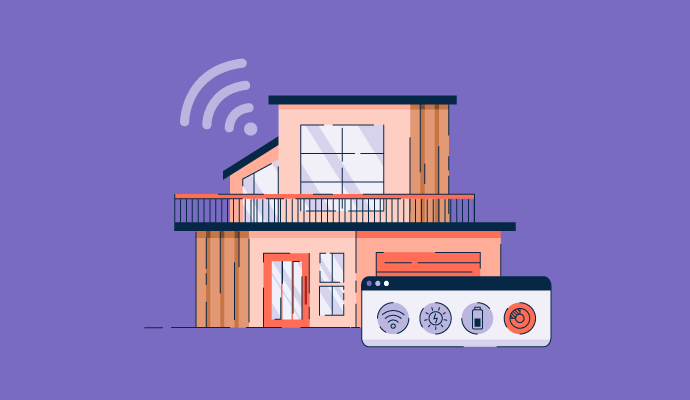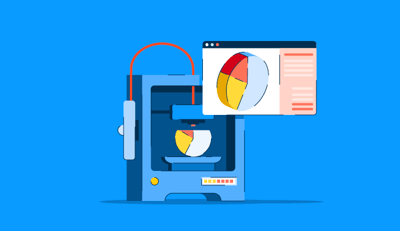Welcome to the era of the Internet of Things (IoT).
It’s a world where your fridge sends you alerts to buy milk or your door locks itself as you pull out of the driveway. Interconnected devices have become an integral part of our lives.
Whether at home, office, medical or financial institution, or any industry, IoTs’ roots stretch through all walks of an individual’s life. IoT statistics prove that interconnected devices or machines aren’t flashy new tech anymore but a solution to the needs of this technologically- charged world.
Many organizations that have adopted IoT use IoT device management platforms to easily track, monitor, and manage physical devices at scale. Let’s dive deeper into IoT statistics and use factual data to present a strong case for IoT in your organization.
Top IoT statistics
From smart homes to industries, IoT is transforming our day-to-day lives and how we operate as businesses. Below is a list of top IoT statistics that reveal how IoT machines and devices are increasingly immersed in the digital landscape.
- In 2022, 871 million smart home devices were shipped. This number is predicted to increase to 1.23 billion in 2027.
- B2B uses have the potential to generate nearly 70% of the value enabled by IoT.
- $1.1 trillion is the predicted size of the IoT market in 2023.
80%
of companies have integrated IoT in their operations in some way.
Source: Forbes
- 43% of energy companies use IoT to improve customer experience.
- The IoT market in agriculture is projected to reach $30 billion in 2030.
- $101.8 billion was the revenue from the consumer media and internet devices segment of IoT.
- Enterprise IoT had a 76% total IoT revenue share in 2022.
- $800 is the current market size of IoT devices and technology.
IoT security statistics
As interconnected devices evolve rapidly, addressing security concerns becomes pivotal for frictionless adoption. You need to consider the trends in IoT security breaches and adopt the right countermeasures to safeguard against them. Many organizations use IoT security software to protect against threats to their network of IoT devices.
Let’s dive into these statistics to understand the state of IoT security.
- 42% of organizations can identify insecure IoT devices, and only 14% promptly replace them upon identification.
- A striking 98% of IoT traffic remains unencrypted and exposes personal and confidential data on networks.
- 32% of companies that have already adopted IoT consider the lack of skilled personnel for data security as their most critical concern.
- 57% of retailers actively take measures to enhance privacy, while 43% focus on preventing data breaches.
- 55% of companies do not require third-party IoT providers to comply with security and privacy measures.
- 48% of businesses cannot detect if their IoT devices have been breached.
90%
of security professionals believe that unsecured IoT and applications put their organizations at risk of cyber attacks and data breaches.
Source: PurpleSec
- IoT security concerns will impede growth, potentially reducing spend on IoT security by 80% due to a lack of prioritization and implementation of best practices.
- 50% of executive concerns regarding IoT are related to the absence of industry-wide standards and security, interoperability, and cost considerations.
- 28% of executives, on average, plan to invest in IoT security within the next 12 months.
- A significant majority (74%) of global consumers express concerns about their civil rights in relation to IoT, with 92% desiring control over the type of personal information automatically collected.
- Attacks on devices are regarded as the primary concern for 33% of these companies
- Routers account for 75% of infected devices in IoT attacks, followed by connected cameras at 15%
- 76% of risk professionals believe that IoT exposes them to cyber attacks.
- 33% of survey respondents consider attacks on IoT devices that may impact critical operations a characteristic concern.
- 48% of businesses admit to being unable to detect IoT security breaches on their networks.
- Encrypted threats and IoT malware increased by 215.7% after 2018.
IoT growth statistics
IoT is continuously growing and is transforming our lives. As this digital revolution unfolds, it’s best to measure the transformation’s magnitude and understand what we can expect from the IoT ecosystem in the foreseeable future.
Below are statistics that dive into the explosive growth of IoT.
- 67% of IoT usage takes place in North America, Western Europe, and China.
- IoT market valuation leaped from $100 billion in 2017 to $742 billion in 2020.
- 94% of retailers benefit from IoT and believe its advantages outweigh the inherent risks
- The IoT retail market is expected to reach $35.5 billion by 2025.
- The automotive IoT market was valued at $15.87 billion in 2015, showing a robust compound annual growth rate (CAGR) of 26.5% over eight years.
- 34% of brands hope for widespread implementation of IoT solutions, leading to substantial industry growth in the coming decade.
10%
of the boost in the United States GDP will come through IoT.
Source: DataProt
- The IoT could generate between $4 trillion and $11 trillion of economic value by 2025.
- 40% of the global value IoT generates will be concentrated in developing economies.
- The US is at the forefront of full-scale IoT deployment, with 44% of companies already adopting the technology. The United Kingdom follows with 41% and Germany with 35%.
- Global smart device figures are projected to grow by 780 million from 2016's 325 million, as smart device statistics indicate.
- 16% of business leaders initially anticipated a significant profit increase due to their IoT investments, and 32% eventually achieved this outcome.
- Companies could invest up to $15 trillion in IoT by 2025, creating substantial value for their businesses.
- Smart cities constitute 23% of existing comprehensive IoT projects.
- 58% of financial executives report having well-developed IoT initiatives, with the financial services industry leading in IoT deployment.
IoT device statistics
IoT devices range from smart thermostats controlling our homes' temperature to wearable fitness trackers monitoring our health. They transform our world into a connected ecosystem, making our lives more efficient, safer, and convenient.
As the use of IoT devices continues to grow, our interaction with the world around us is being reimagined in extraordinary ways. Below are some statistics that prove it.
- The surging IoT device market is estimated to reach $1.4 trillion by 2027.
- Hardware represents 30% of IoT technology’s total value.
- 63% of consumers find connected devices "creepy."
- An average smart home could face over 12,000 hacker attacks in a week.
- The number of active IoT devices will exceed 25.4 billion by 2030.
- 85% of respondents state that they have allocated budgets for IoT projects, and 30% express that they cannot live without smart devices.
- 56% of respondents report not keeping an inventory of IoT devices, and 64% do not keep an inventory of IoT applications.
- 63% of consumers find connected devices concerning due to data collection practices.
- 63% of all installed IoT units in 2020 belonged to the consumer electronic segment.
- Only 35% of IoT projects aim to increase revenue, while 24% also focus on enhancing overall safety.
- 77% of sector executives believe IoT technology will transform offices into smart workplaces.
79.4 zettabytes (ZB)
of data will be generated by the Internet of Things devices in 2025.
Source: IDC
- There are currently 31 billion IoT devices worldwide.
- An overwhelming 97% of organizations face challenges in extracting value from IoT.
- 90% of all new cars by 2040 will be connected through IoT.
IoT in healthcare statistics
IoT in healthcare creates a network of medical devices to collect data and utilize analytics to offer better patient care. Some IoT devices can monitor patients’ vital signs and track the location of medical equipment in real time.
Despite security concerns, the intersection of IoT and healthcare paves ways to reduce healthcare costs, increase treatment effectiveness, and enhance patient experiences. With IoT, a new era of precision and personalized medicine came into the picture, and it’s gradually getting better for more advanced patient care. The statistics below support the motion with data and facts.
- The global IoT healthcare market is set to reach a staggering $14 billion by 2024.
- As real-time data monitoring demand increases, the IoT healthcare industry is predicted to grow at a CAGR of 19.9% over five years.
- 55% of survey respondents belonging to the healthcare industry report substantial IoT implementations.
83%
of medical imaging devices operate on unsupported operating systems, increasing security vulnerabilities.
Source: Palo Alto Networks
- 41% of users express willingness to allow their health data to be utilized for research on the relationship between heart conditions and exercise.
- In 2020, the number of IoT devices in households reached 12.86 billion, with 40% of IoT devices primarily used in the healthcare sector.
Industrial IoT statistics
The Industrial Internet of Things (IIoT) has driven digital transformation in various industries. It can enhance operational efficiency, productivity, and safety while considerably reducing costs. Below are some IIoT statistics that help comprehend the rapid adoption of IIoT on the market.
- 80% of surveyed organizations that have implemented IoT are experiencing positive outcomes.
58%
of manufacturers believe IoT is necessary to digitally transform their industrial operations.
Source: Atlasiko
- Industrial manufacturing companies are expected to witness an 80% adoption rate of IoT technology.
- Cost savings are the primary revenue driver for 54% of enterprise IoT projects.
- The industry will have 130 million more IoT endpoints than figures before 2020.
- In the manufacturing sector, 64% of operations in power and energy and 62% of processes in aviation and aerospace rely on IIoT applications.
Toward an interconnected and secure digital space
IoT has been a transformative force across many sectors. It brings growth, innovation, and multiple opportunities to streamline operations.
Although IoT paints a picture of unparalleled potential, it draws some serious security and privacy concerns. Such challenges emphasize the need for robust security protocols and a systematic approach to data management.
The above statistics help to recognize the true potential of IoT on the market. Let them be a reference point to make an informed decision in this evolving IoT landscape.
Learn more about data management suites to discover an efficient way to manage an organization’s data.
 by Sagar Joshi / June 15, 2023
by Sagar Joshi / June 15, 2023
 by Sagar Joshi
by Sagar Joshi
 by Sagar Joshi
by Sagar Joshi
 by Sagar Joshi
by Sagar Joshi
 by Sagar Joshi
by Sagar Joshi
 by Sagar Joshi
by Sagar Joshi


